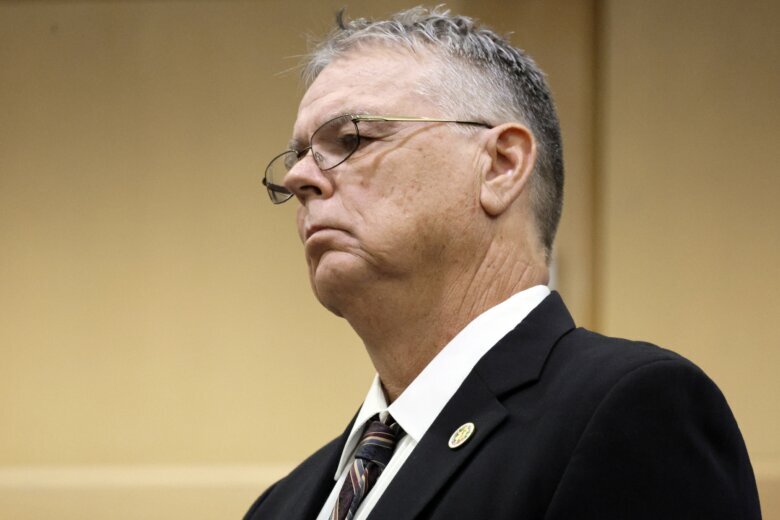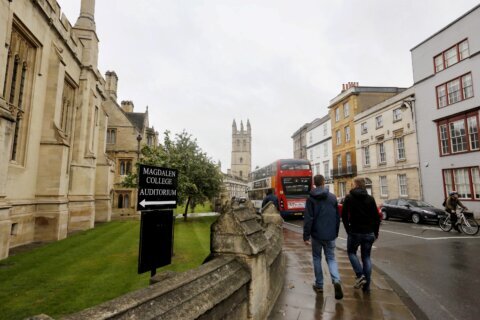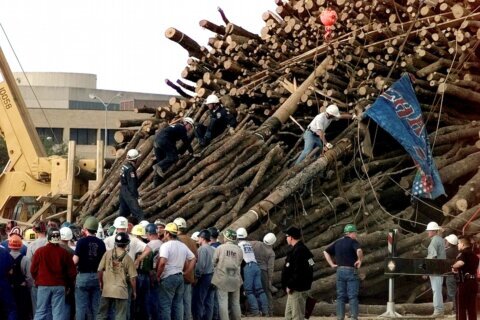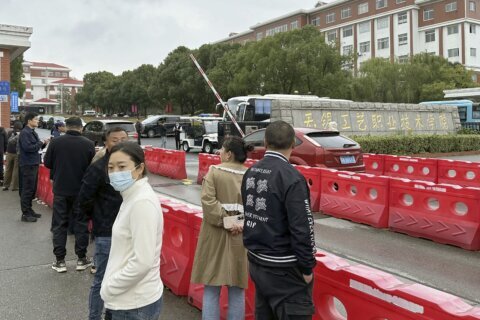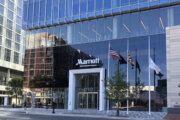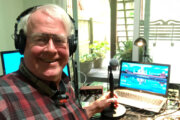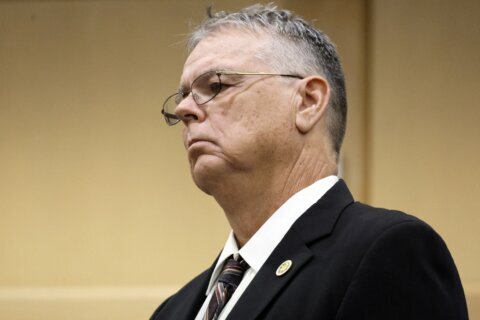
FORT LAUDERDALE, Fla. (AP) — The prosecution and defense in the trial of a Florida sheriff’s deputy accused of not preventing some of the Parkland school shooting murders gave wildly divergent opening statements Wednesday, setting the stage for a trial that is the first of its kind in U.S. history.
Prosecutor Steven Klinger told jurors that former Broward County Deputy Scot Peterson could have confronted shooter Nikolas Cruz and stopped the deaths of six of the 17 people who died at Marjory Stoneman Douglas High School five years ago. Instead, Klinger said, Peterson took cover rather than enter the three-story building where the shootings happened.
Peterson had undergone training in which he was told that he needed to go toward the gunshots if there’s an active shooter, because each bullet fired is potentially another death, Klinger said.
“You’ve got to get in there and you’ve got to find the shooter,” said Klinger, who spent most of his statement recounting Cruz’s actions, not Peterson’s. Cruz pleaded guilty and received a life sentence.
But defense attorney Mark Eiglarsh, in an emotional address, told the jurors that Peterson “was thrown under the bus” to preserve the career of then-Sheriff Scott Israel, who he said needed to find a scapegoat for his department’s failures leading up to the Feb. 14, 2018, shooting.
“A lot of heat was coming his (Israel’s) way,” Eiglarsh said, even after the sheriff said on national television that Peterson and his other deputies did the best they could with the information they had.
But when the political pressure rose, Israel chose to sacrifice Peterson, who was his friend, Eiglarsh said. Israel never even asked Peterson what happened before accusing him publicly about a week after the shooting of failing to act, he said.
“All he (Israel) had to do if he cared about the truth was call him (Peterson) up and say, ‘Why didn’t you go in?’” Eiglarsh said. He said there was only one reason he didn’t call him: “because anything my client said … would not have served Scott Israel.” Gov. Ron DeSantis, in one of his first acts after taking office, fired Israel 11 months after the shooting.
Peterson is charged with seven counts of felony child neglect for four students who were killed and three who were wounded on the third floor of a classroom building. Peterson arrived at the building with his gun drawn 73 seconds before Cruz reached the third floor. But instead of entering, Peterson backed away as gunfire sounded. He insists that he did not know where the shots were coming from because of echoes between the buildings.
Peterson is also charged with three counts of misdemeanor culpable negligence for the adults who were shot on the third floor, including a teacher and an adult student who died. He also faces a perjury charge; prosecutors say he lied to investigators. Peterson was not charged in connection with the 11 who were killed and 13 who were wounded before he arrived at the building.
If convicted, Peterson could get a prison sentence of nearly a century and lose his $104,000 annual pension. In a similar case, Texas authorities are investigating officers in the town of Uvalde who didn’t confront the shooter who killed 19 elementary students and two teachers last year. None have been charged, however.
To gain a conviction, prosecutors must convince jurors that Peterson knew Cruz was shooting inside the building and that his actions and inaction exposed the victims to harm.
Peterson, dressed in a blue suit and red tie, sat at the defense table, sometimes taking notes. A deputy for 32 years, he’d been at Stoneman Douglas for nine years, after 19 years at other schools. He retired shortly after the shooting, then was fired retroactively.
Prosecutors began their case by playing two cellphone videos that were taken by students on the first floor during the attack to show how loud the shots were. Eiglarsh pointed out that Peterson wasn’t near the building when those shots were fired and that their sound would have been muffled outside.
Only the jury, attorneys and judge could see the videos, but one victim’s father wore earplugs and held his head in his hands to block the sound of the gunshots and the moans and cries of a wounded student.
Security videos show that 36 seconds after the attack began, Peterson exited his office about 100 yards (92 meters) from the school’s 1200 building and jumped into a cart with two unarmed civilian security guards. They arrived at the building a minute later.
Peterson got out of the cart near the east doorway to the first-floor hallway. Cruz was at the hallway’s opposite end, firing his AR-15-style semi-automatic rifle.
Peterson, who wasn’t wearing a bullet-resistant vest, didn’t open the door, standing there for 27 seconds, Klinger said. He then took cover 75 feet (23 meters) away in the alcove of a neighboring building, his gun still drawn.
The shooting “was so loud and so close,” Peterson told investigators two days after the massacre. “I thought it was probably outside.”
He said he heard “two, three” shots, which is the basis of the perjury charge. Eiglarsh said Peterson was referring to how many shots he heard when he first got to the building and the detective never asked if he heard more after that.
The security guards told investigators it was clear to them that the shots came from the building. Eiglarsh says he’ll call 22 witnesses who also thought the shots came from outside the building.
Inside, Cruz climbed to the upper floors, firing approximately 70 more shots over nearly four minutes.
Peterson didn’t leave his spot for about 40 minutes — about 35 minutes after the shooting had stopped.
For Peterson to be convicted of child neglect, prosecutors must first show he was legally a caregiver to the juvenile students. Florida law defines a caregiver as “a parent, adult household member or other person responsible for a child’s welfare.”
If jurors find Peterson was a caregiver, they then must determine whether he made a “reasonable effort” to protect the children or failed to provide the necessary care.
Copyright © 2024 The Associated Press. All rights reserved. This material may not be published, broadcast, written or redistributed.

